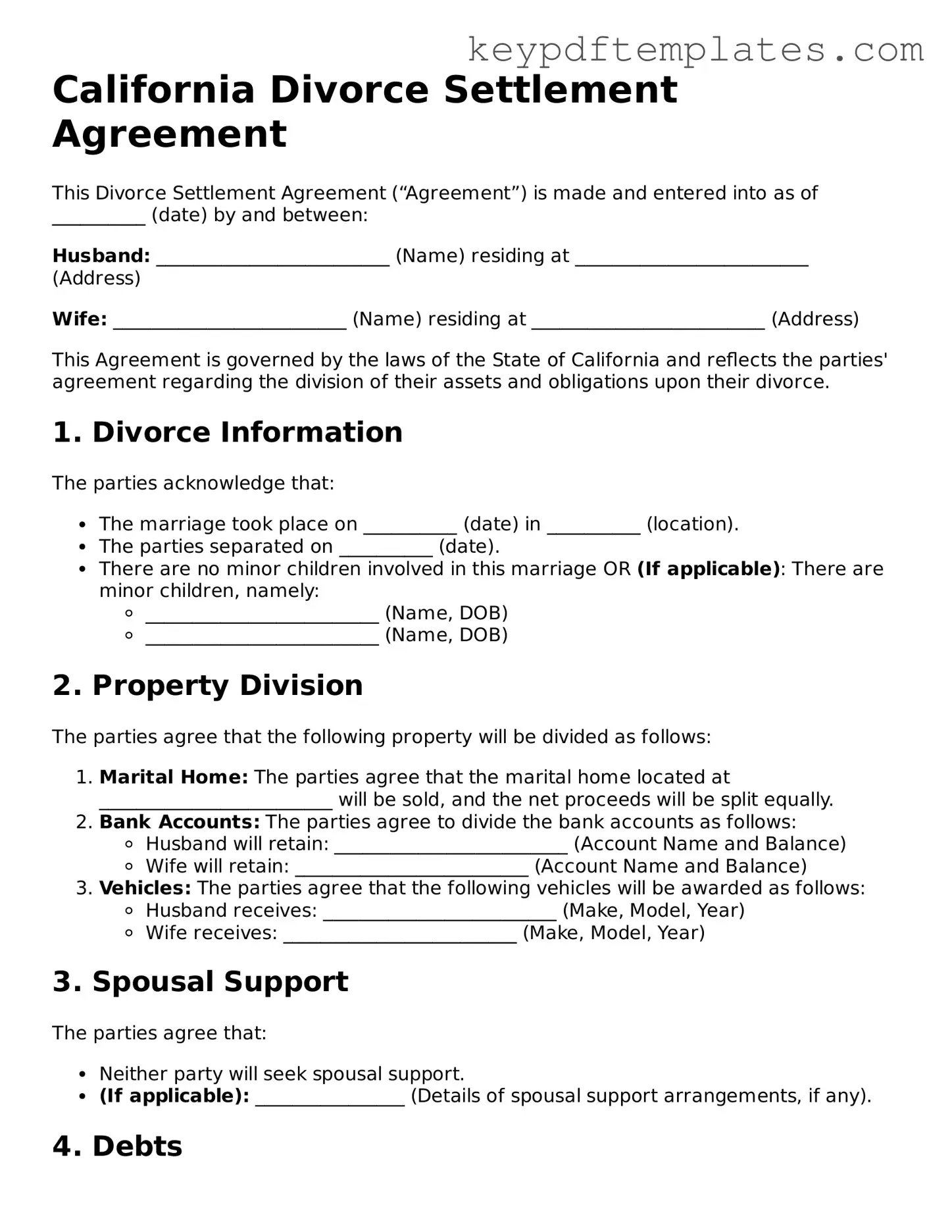Legal Divorce Settlement Agreement Document for the State of California
The California Divorce Settlement Agreement form is a legal document that outlines the terms and conditions agreed upon by both spouses during a divorce. This form covers important aspects such as property division, child custody, and support payments. Completing this agreement is essential for ensuring a smooth and fair divorce process.
Modify Document Online
